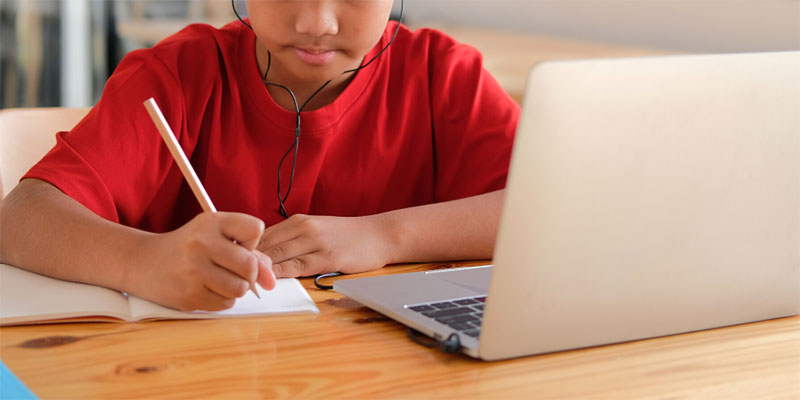Educational News
What Remote Learning Has Taught Us

After over a year of remote learning, teachers and students alike have learned a lot! As we look back at the past year and a half, what lessons can we take away?
There is More Than One Way to Learn
When it comes to educating children, there is no "one size fits all" approach. Each child has individual needs and how they receive and process information is not uniform. While independent students were able to thrive in the format of autonomous learning, those with a more hands-on approach or looking for more guidance were left behind.
Teachers have always been able to adapt their classrooms somewhat to fit the student. With hybrid learning and the urgent need to combat the COVID slide experienced by so many, much more will have to be done. School curriculums have started to pivot towards diversifying the content of each subject, including multi-sensory materials to reach each child in a way that fits them best. Even when school returns to a pre-pandemic format, the lesson to reach every child has been taken to heart.
A Personal Connection is Stronger Than Tech
Though teachers and students may have been separated by distance, going through the pandemic actually encouraged an increase in personal moments, shared virtually. Journaling became a popular touchstone for children and adults alike during the pandemic as a way to document emotions and help process the enormous cultural change we were experiencing. This increase in self-reflection provided opportunities in the classroom to share, discuss and empathize with one another. Students have been more separated than they have ever been, not just missing school due to bad weather but living in near complete isolation away from friends and extended family. Using computers could connect students to their schoolwork, but how could it connect them to each other?
Teachers recognized that the upside to using video conferencing software was that it allowed them to focus more on the faces of their students. It created a more conversational space, one where they could monitor a child’s changing expressions and levels of comfort without spending much of the class time turned around a facing a blackboard. To encourage kids to speak up during lessons, teachers used ice breakers and getting to know you questions to encourage dialogue. Over time, classroom interaction took on a more meaningful purpose beyond imparting knowledge. Many teachers who previously did not engage with their students beyond prompting questions and answers related to the subject material saw the benefit in making a personal connection. The lesson they took away is that creating an empathetic, supportive environment facilitates learning even better than a no-nonsense, straight to the point experience.
Inclusivity is More Important Than Ever
The limitations of technology are felt more keenly by some students than others. Firstly, children who do not have access to reliable internet have been all but cut off completely from online learning, with almost no other way to continue their education until in-person classes resume full time. There had already been a growing education gap between children with internet access and those without, but the pandemic has widened this chasm significantly. Secondly, for the nearly 7 million students with disabilities attending public school in the US, remote learning has proved to be even more difficult. Teachers report that their students are not performing as well and participating in their schoolwork significantly less than they had been pre-pandemic, despite have the same level of interaction and attention as non-disabled students. What’s worse, reports have shown that school districts around the country are no prioritizing getting disabled students back into the classroom, even though they are the demographic which would receive the greatest benefit from returning.
Disability advocates have pointed out many inequities in our culture and in our laws regarding the disabled. Even between school districts, the level of support for these students tends to dip significantly in urban, high poverty schools or schools with high concentrations of students of color. This is a hard lesson to learn, but the data shows us where we can do better. We all hope that as more research is done, school systems will begin to address and correct these issues.
What We Have Learned
Operating our learning centers through the pandemic has been a huge learning experience for us here at Best Brains. We learned how dedicated our staff was, how resilient our students were, and how dedicated their parents were to providing a quality education. We learned that our philosophy of education was keeping kids focused in the classroom, helping them stay confident and present in their lessons. We learned that we could continue to grow despite setbacks and uncertainty. We learned that, even during the worst time, our families still strive to Be Their Best!


